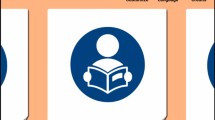Abstract
The present paper presents the preliminary results of an ongoing research programme carried on at the Politecnico di Milano in the INDACO department in collaboration with a non-governmental organization called Sim-patia. The Sim-patia organization is in charge with the management of a rest house for people suffering from physical and cognitive pathologies that reduce their motion capabilities and self support in the daily activities. The ongoing research employs user-centred techniques to investigate the physical and cognitive needs of the patients in residence. Preliminary results of the experiments showed the effectiveness of the video communication solution developed for a particular physical environment. This experience is quite significant for our national context since up to now no similar cases have been published in Italy. The present paper illustrates the design approach, the first results of the research project and the evaluation activities performed on the prototyped solution.






Similar content being viewed by others
Notes
Andrich and Alimandi 1997
AMAS (Activity Matching Ability System) is a data source developed by the Human Focused Design Centre, Ergonomics and Safety Research Institute, Loughborough University
Andreoni et al. 2002
USERfit was developed as a methodology and design handbook specifically for the assistive technology sector. USERfit embodies a user-centred design philosophy: product developments are driven from user requirements rather than from technological capabilities.
HyperLink Technologies is an industry designing and developing wireless internet solutions. This company produces a point and click device measuring electric brain potential, so allowing pc interaction for people with paralyzed upper limbs. This device is efficiently in use at Sim-patia.
Alta Scuola Politecnica is an excellence education project of Politecnico di Milano and Politecnico di Torino
User involvement in all stage of the design process, from requirement definition to final evaluation; iterative process with prototyping/evaluation/modification cycles; interdisciplinarity of the design team as defined in Norman and Draper (1986)
References
Amit, V. (2000), Constructing the Field: Ethnographic Fieldwork in the Contemporary World, Routledge, New York
Andreoni, G., Costa, F., Landoni, P. (2002), Tecnologie informatiche e utenza debole. La progettazione ergonomica dei siti web e delle postazioni di lavoro per i disabili. Il Sole 24 Ore Pirola, Milan
Andrich, R., Alimandi, L. (1997), Guidelines for setting up teleworking centres integrating disabled people, T1003 TWIN Project. SIVA, Milan
Beyer, H., Holtzblatt, K. (1998), Contextual Design: A Customer-Centred Approach to Systems Designs. Morgan Kaufmann, San Diego
Drury, C. G. (1995), Methods for direct observation of performance, in Wilson, J. R. and E. N. Corlett (edited by), Evaluation of Human Work. A practical ergonomic methodology, Taylor & Francis, Philadelphia
Holtzblatt K., Wendell J. B. and Wood S. (2004), Rapid Contextual Design: A How-to Guide to Key Techniques for User-Centered Design, Morgan Kaufmann, San Francisco
Lambert and McKevitt (2002), Anthropologies in health research: form qualitative methods to interdisciplinarity, Design Management Journal, 325:210–213
Lifchez, R. and B. Winslow (1979), Design for indipendent living: the environment and physically disabled people, Architectural Press, Boston
Norman, D. A., & Draper, S. W. (Eds.) (1986). User centered system design: New perspectives on human-computer interaction. Hillsdale, NJ: Lawrence Erlbaum Associates
Poulson, D., M. Ashby e S. Richardson, edited by (1996), Userfit. A Practical Handbook on User-centred Design for Assistive Technology. European Commission, Brussels
Further Reading
Glinert E. P. and B. W. York (1992), Computers and people with disabilities in Common. ACM 35, 5
Johnson-Laird P.N. (1988), The Computer and the Mind. Wllliam Collins Sons & Ltd, Londra.
Legrenzi P., Psicologia cognitiva applicata. Pensare e comunicare, (2004). Editori Laterza, Roma
Norte S. and F. G. Lobo (2007). A virtual logo keyboard for people with motor disabilities. In Proceedings of the 12th Annual SIGCSE Conference on innovation and Technology in Computer Science Education. ITiCSE '07. ACM Press, New York, NY
Smith J. R., K. P. Fishkin, B. Jiang, A. Mamishev, M. Philipose, A. D. Rea, S. Roy and K. Sundara-Rajan (2005), RFID-based techniques for human-activity detection. Commun. ACM 48, 9
Acknowledgements
Several people contribute to this research project and make it possible to continue. We must firstly name Nicola Liboni, in charge to the technical staff in Sim-patia, also coordinating the experimentations and IT innovation in the rest house with the support of Marzio Ghezzi. The first context analysis were carried on with the support of Maresa Bertolo, Vanessa Deluca, Musstanser Tinauli, while a team of five students of the Alta Scuola Politecnica realized the first prototype project and tested it, namely Pelin Arslan, Donato Barbagallo, Giordano Brombin, Pietro Gazzano, Fabrizio Guerrieri. At present, a new research phase is carried on, aimed to the definition of guidelines for visual language design for people affected by cognitive disease, with the support of Jose' Allard and Maresa Bertolo.
Author information
Authors and Affiliations
Corresponding author
Rights and permissions
About this article
Cite this article
Pillan, M., Costa, F. User-Centred Design of Communication Environments and Systems for Disabled People. Know Techn Pol 22, 265–273 (2009). https://doi.org/10.1007/s12130-009-9089-5
Received:
Accepted:
Published:
Issue Date:
DOI: https://doi.org/10.1007/s12130-009-9089-5




